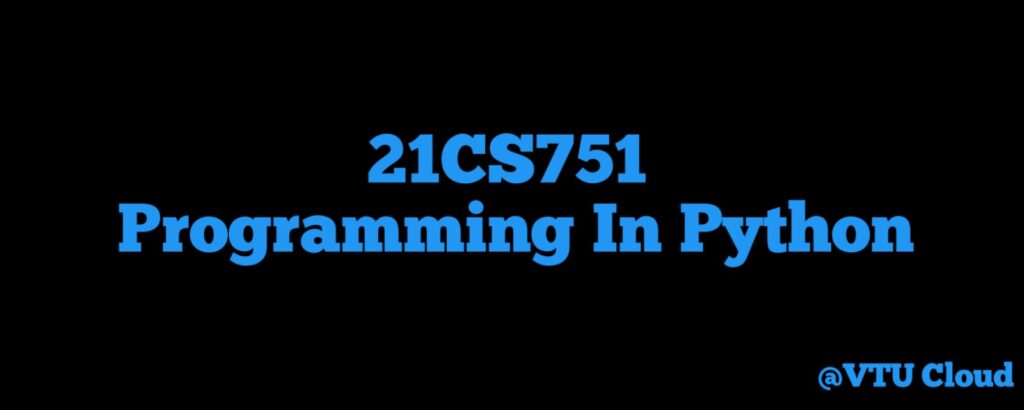21CS751 Programming In Python

Course Learning Objectives
CLO 1. To understand why Python is a useful scripting language for developers
CLO 2. To read and write simple Python programs
CLO 3. To learn how to identify Python object types.
CLO 4. To learn how to write functions and pass arguments in Python.
CLO 5. To use Python data structures –- lists, tuples, dictionaries.
SYLLABUS COPY
MODULE - 1
INTRODUCTION DATA, EXPRESSIONS, STATEMENTS:08 Hours
Introduction: Creativity and motivation, understanding programming, Terminology: Interpreter and
compiler, Running Python, The First Program; Data types: Int, float, Boolean, string, and list, variables,
expressions, statements, Operators and operands.
MODULE - 2
CONTROL FLOW, LOOPS:
Conditionals: Boolean values and operators, conditional (if), alternative (if-else), chained conditional
(if-elif-else); Iteration: while, for, break, continue, pass statement.
MODULE - 3
FUNCTIONS AND STRINGS:
Functions: Function calls, adding new functions, definition and uses, local and global scope, return
values.
Strings: strings, length of string, string slices, immutability, multiline comments, string functions and
methods;
MODULE - 4
LISTS, TUPLES, DICTIONARIES:08 Hours
Lists:List operations, list slices, list methods, list loop, mutability, aliasing, cloning lists, listparameters,
list comprehension;
Tuples: tuple assignment, tuple as return value, tuple comprehension;
Dictionaries: operations and methods, comprehension;
MODULE - 5
REGULAR EXPRESSIONS,FILES AND EXCEPTION:
Regular expressions:Character matching in regular expressions, extracting data using regular
expressions, Escape character
Files and exception: Text files, reading and writing files, command line arguments, errors
andexceptions, handling exceptions, modules.
Course outcome
At the end of the course the student will be able to:
CO 1. Understand Python syntax and semantics and be fluent in the use of Python flow control and
functions.
CO 2. Demonstrate proficiency in handling Strings and File Systems.
CO 3. Represent compound data using Python lists, tuples, Strings, dictionaries.
CO 4. Read and write data from/to files in Python Programs
Suggested Learning Resources
Textbooks
1. Charles R. Severance, “Python for Everybody: Exploring Data Using Python 3”, 1st Edition,
CreateSpace Independent Publishing Platform, 2016.
http://do1.dr-chuck.com/pythonlearn/EN_us/pythonlearn.pdf
2. Allen B. Downey, “Think Python: How to Think Like a Computer Scientist”, 2ndEdition, Green
Tea Press, 2015. (Chapters 15, 16, 17)
http://greenteapress.com/thinkpython2/thinkpython2.pdf
REFERENCE BOOKS
1. R. Nageswara Rao, “Core Python Programming”, dreamtech
2. Python Programming: A Modern Approach, Vamsi Kurama, Pearson
3. Python Programming , Reema theraja, OXFORD publication